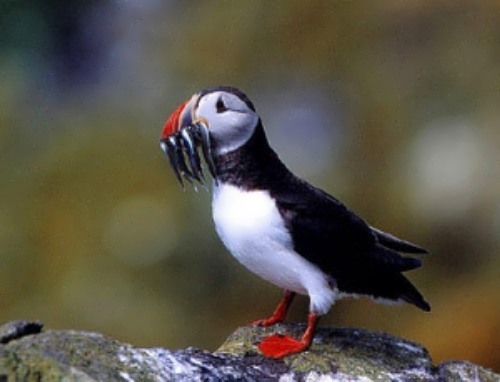Skye
Skye is located off Scotland’s northwest coast, some 184 km from Glasgow. The island measures 77 km in length and 38 km at its widest. The largest island in Scotland’s Inner Hebrides, Skye covers an area of 1,740 sq km, about half the size of the state of Rhode Island in the USA. Skye’s landscape is dominated by the spectacular Black Cuillin Hills, which an English journalist H. V. Morton (1892-1979) described in his book In Search of Scotland. “Imagine Wagner’s Ride of the Valkyries frozen in stone and hung up like a colossal screen against the sky. It seems as if Nature when she hurled the Coolins up… said: ‘I will make mountains which shall be the essence of all that can be terrible in mountains.”
According to legend, the island, once flat, was inhabited by Cailleach Bhur, the goddess of winter. She had enslaved a beautiful girl, the sweetheart of spring, who appealed to the sun for help. In response, the angry sun buried his burning spear at Cailleach Bhur as she rode across Skye. But he missed his mark and destroyed the landscape which broke into a range of hills — the Cuillins. Skye’s inhabitants often tell this tale to explain the curious fact that these hills are rarely snow-covered, even in winter. When surrounding hills are covered with snow, the Black Cuillins stand dark against the sky.
Twenty peaks feature in the Black Cuillins, 15 of them more than 914 m in height. The tallest, Sgur Alasdair, stands 1,009 m high. The peaks came into existence some 50 million years ago. The Red Cuillin Hills, some 16 km to the east are more rounded than the Black Cuillins. In the south of the island stands the unusual rock known as the Old Man of Storr. Both these formations had their beginnings 10,000 years ago.
Little of Skye’s landscape can support the barley, oats and other crops grown elsewhere in Scotland. Areas of human settlement occur only rarely. Thousands of seabirds nest on the island’s coast and shore. The puffin which nests on dangerous rocks, can catch small fish in great numbers. It is not unusual for a puffin to return to its nest with as many as 14 fish in its mouth. Yet Skye’s puffin population is far from growing due largely to the attacks of lesser black-backed gulls which rob the puffins of their catch before they can reach their nests to feed their young.
Скай
Скай располагается у северо-западного побережья Шотландии, в 184 км от Глазго. Остров составляет 77 км в длину и 38 км в самом широком месте. Самый большой остров в Шотландии, Скай, занимает площадь 1740 кв км, около половины размера штата Род-Айленд в США. В пейзаже Ская доминируют впечатляющие горы Куиллин, которые английский журналист Мортон (1892-1979) описал в своей книге «В поисках Шотландии».
«Представьте себе Полет Валькирий Вагнера замороженный в камне и расположенный, словно колоссальный экран на фоне неба. Кажется, как будто природа, когда она подбросила Куиллин … сказала: «Я создам горы, которые должны стать сутью всего, что может быть страшного в горах».
Согласно легенде, остров, когда-то плоский, был заселен старухой Бхур, богиней зимы. Она поработила красивую девушку, возлюбленную весны, который обратился к Солнцу за помощью. Рассерженное Солнце метнул свое горящее копье в старуху Бхур когда она ехала через Скай. Но он промахнулся и расколол пейзаж, который превратился в Куиллин. Жители Скайя часто рассказываю эту историю, чтобы объяснить любопытный факт — эти горы редко бывают заснеженными даже в зимний период. Когда окружающие горы покрыты снегом, Черные Куиллин стоят темные на фоне неба.
Горы Куиллин имеют 20 вершин, и 15 из них более 914 м в высоту. Самая высокая — Сгур Алистер — 1009 метров. Пики появились около 50 миллионов лет назад. Красные горы Куиллин, находящиеся около 16 км к востоку более округлые, чем черные Куиллин. В южной части острова находится необычная гора, известная как Старик Сторр.
В Скайе выращивают ячмень, овес и другие культуры. Области человеческого поселения встречаются очень редко. Тысячи морских птиц гнездятся на побережье острова и берегах. Тупик, который гнездится на опасных скалах, может поймать рыбку в большом количестве. Это не является необычным для тупиков, возвращаться в свое гнездо с 14 рыбами во рту.
Тем не менее, популяция тупиков далека от увеличения в основном из-за черных чаек, которые воруют у тупиков добычу прямо изо рта, прежде чем они долетают до своих гнезд, чтобы накормить птенцов.
source


